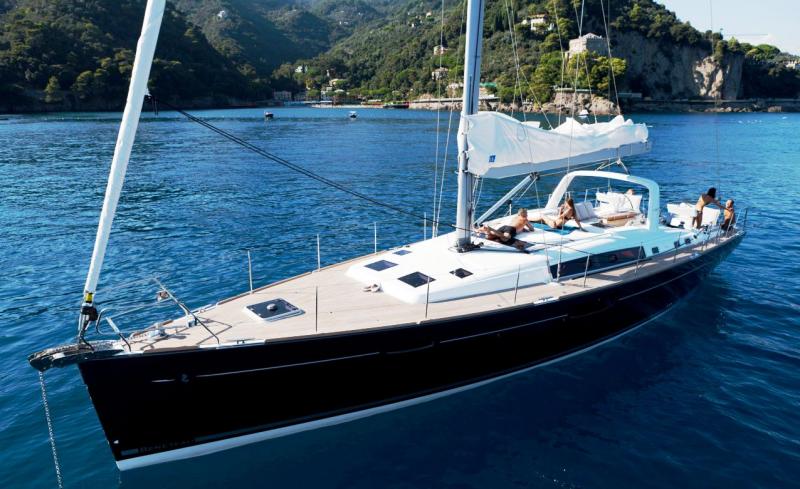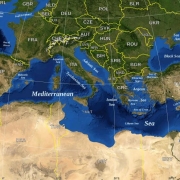Selling your Boat in the Mediterranean
30 June 2016




Selling your boat in the Mediterranean, as well as buying a yacht, requires in-depth knowledge to ensure a smooth transaction for both the Buyer and Seller. Allied Yachting’s expertise ensures hassle-free selling and buying without the unnecessary headaches which can accompany such a process, guaranteeing a smooth sale and purchase and your money in the bank.
Of course you can always decide selling your boat in the Mediterranean, or buying one by yourself, but putting a boat on the market by yourself can be trying as it is time-consuming and you may be confronted to unfamiliar issues or aspects of the sale which can result in a sale or purchase being cancelled or not happening at all if all areas of contracts, registrations, surveys, taxes, VAT, legal formalities or obligations, are not entirely covered and reviewed.
Fundamentally, if you sell your boat yourself, you won’t need to pay a Broker’s commission, but without assistance, it will often take you longer to sell the boat and you may have to settle for a lower price. Generally, sellers work with Brokers more often when the boats are newer, larger, and/or more expensive, but there are many other reasons to list boats of all sizes and conditions with a Broker. You may also appoint a Broker to search for a yacht adapted to your requirements, specifications, layout and budget.
At Allied Yachting, nor the Seller or the Buyer are left to sort out all the formalities and legalities by themselves after we agree to the sale and purchase terms. Your Allied Yachting Broker will accompany you throughout the whole process from the initial enquiry, onto inspections, negotiations, agreements, and through to the final settlement and delivery.
Your Broker will also handle everything including arranging the survey, all deletion or registration formalities, VAT payments if applicable – which especially applies in the EU – and any other tax issues which may arise.
We will also assist in all pricing negotiations and any other legal, financial, operational, refit or berthing issues of the sale or purchase, so you can be benefit of peace of mind throughout the process.
LISTING AND MARKETING
We understand how important a quick sale can be. So, we focus on marketing your yacht to insure the highest possible exposure, and an adapted too, using media such as the internet, magazines, direct mailing through our customer database and networking. We allocate a significant budget every year advertising in the worlds’ best-known yachting websites, magazines and maintaining the performance of our website and our Customer databases so you can be sure we remain atop of our business as a preferred source on the French Riviera for selling and buying boats in the Mediterranean. Every month we increase, update and advertise our Clients’ yachts for sale which helps to increase traffic to our website and consequently ensures ongoing new Buyers generating further new business.
For other marketing activities for selling your boat in the Mediterranean, we can also ensure a tailor-made plan for your yacht including boat-show participations, on-going and scheduled yacht showings and events, open days to view your boat, professional photo-shoot, high resolution brochures, video, 360 video and broker-to-broker communications.
THE SALES AGREEMENT : 2 OPTIONS
When selling your yacht through Allied Yachting, there are two options to consider in terms of the Sales Agreement, either “Central Agency” or “Direct or Open Listing”. There is often confusion between the two and it is important to understand the differences:
CENTRAL AGENCY
With a Central Agency agreement, one (1) Broker is chosen by the Owner as the Central Agent or CA. He is the Exclusive Agent to manage the sale of your boat and he bears all the costs associated with the marketing and sale of your boat such as advertising, which can prove very costly, mail outs including details of the yacht to his customers, markets the yacht at yacht shows, etc. He will also pass details of the yacht to other Brokers (sub-list), who can, if the Central Agent agrees, also advertise and promote the yacht.
The advantages for the Owner to appoint a Central Agent are:
- A single contact person: Only one broker to give you an instant update on its sale, or to inform prospective Buyers and colleague Brokers of any specification, location or pricing change,
- Guarantee that the yacht will be advertised widely to a high and consistent standard,
- A consistent approach to the market avoiding any misleading specifications, location or pricing of the yacht,
- Priority in marketing and advertisements: If the Buyer is introduced by another Broker (which is quite common) commission is split between the Central Agent and the Buyer’s Broker. This way, the Central Agent is ensured to be able to cover wide marketing and operational costs, and therefore, allocate more budget to market the yacht at a much higher standard.
Using a Central Agency generates the highest commitment from any yacht Broker. As collaborative brokerage deals are more and more common, cooperation between brokerage firms is our key to many successful transactions each year.
Being appointed as Central Agent does not mean Allied Yachting will have the exclusive right to sell the vessel. It only means we are the only ones initially approved by the Owner(s) to list and advertise the yacht. Every other Broker or Yacht Agent can introduce a Client and help us sell the boat too!
When you own a unique or exceptional type of yacht it’s undoubtedly the better option to get her sold, providing that the selected Central Agent has experience in effectively selling your type of vessel and a solid prospective buyer database.
THE DIRECT OR OPEN LISTING AGREEMENT
With a Direct or Open Listing Agreement, the Seller chooses two or more Brokers, all of whom advertise and market the boat independently. The Broker who eventually sells the yacht receives the commission from the sale; he does not have to share any commission with other Brokers and does not have to spend so much time, effort and money on marketing the boat.
Since it is not uncommon for another Broker to bring a prospective Buyer, competition between the appointed Brokers will be high. Whilst this can be seen as an advantage, in reality, most Brokers will endeavor and allocate much more time, effort and budget to sell a boat under Central Agency to increase their chance for a guaranteed commission.
At first glance this may be seen as the better option, but the advantage to the Owner is at best minimal. Indeed, the Direct or Open Listing Agreement will also result into multiple announcements by different Brokers of the same boat at different specifications, prices and even pictures. This may expose the yacht to create confusion and distrust amongst prospective Buyers. If a yacht is announced with many Brokers in different adverts, interested Clients may feel there is something wrong with the boat and they will doubt who is truly an authorized Agent to sell the yacht, creating even more confusion in whom to address their enquiry to.
Another downside is the fact that keen Buyers will put different Brokers in competition to obtain the best possible deal. At the end, this will necessarily affect the value you will get for selling your boat.
COMMISSIONS
We charge a standard (negotiable) 10% commission of the total sale price (including VAT, if applicable) following the rules of MYBA (the Mediterranean Yacht Brokers Association).
Brokerage fees and commissions are generally paid by the Seller from the gross sales price. Some exceptions may apply when Selling or Purchasing a boat in Italy or Turkey.
COOPERATIVE BROKERAGE DOES NOT INCREASE COMMISSIONS
The fact that there are two or more yacht Brokers involved in the sale of a boat (as in most sales in the yachting business), does not change the price of the boat or the amount of commissions paid.
Whether the boat is listed under Central Agency or Direct or Open Listing Agreement, commissions are shared by the Brokers involved in the transaction.
Any sub-listed Broker or Broker introducing a Buyer involved in a transaction – if any – receives his fee from the Central Agent or Broker holding to a Direct or Open Listing Agreement since the later also act as Stakeholders.
SUMMARY
In summary, choosing a Central Agency represents the following advantages:
- The Owner has only one interlocutor, and can be assured the Broker is actively and professionally marketing his yacht to the highest standards on a consistent basis and at the correct asking price,
- No added costs to the Seller and generally higher sales value,
- The Broker will be more responsible and committed to the Seller,
- All other processes surrounding the sale like documentation, formalities, deletion, registration, tax, VAT, survey etc… can be managed through your single interlocutor: your appointed Yacht Broker,
- Every other Broker can also sell the yacht.
Whichever type of Sales Agreement you choose, the key to a successful sale is selecting a competent, well-established and trustworthy Broker, who has the capacity and experience to professionally and efficiently market your yacht.
At Allied Yachting, we have established a successful marketing plan designed to maximise the chances of selling your boat in the Mediterranean and getting the maximum price for your yacht in the shortest possible time.
Finally, please feel free to enquire about any of the other Yachting Services we offer and remember that when purchasing a new Superyacht, built in some of the worlds’ most famous, renowned and experienced Shipyards; there is always an experienced yacht Broker present. There must be plenty of good reasons for that….












